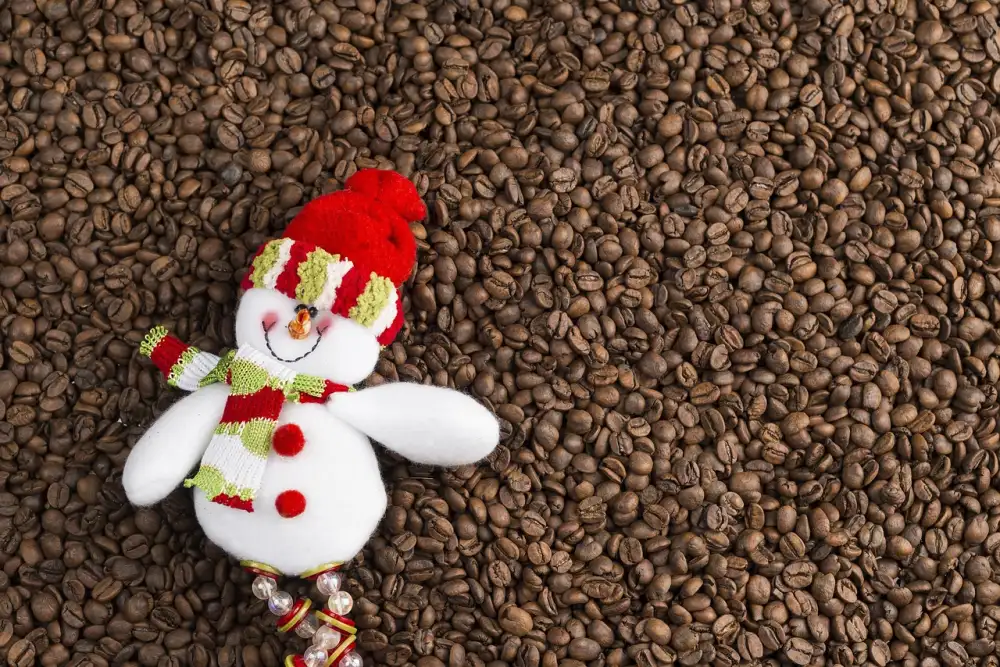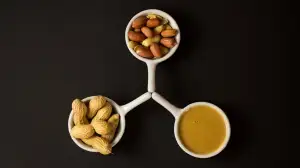Discover the Savory Delights of Pancetta: Unveiling the Secrets of this Italian Cured Meat

Pancetta, a beloved Italian cured meat, is a culinary delight that adds depth and flavor to a variety of dishes. With its rich aroma and delicate texture, pancetta has become a staple ingredient in many kitchens around the world. Whether you're a seasoned chef or an adventurous home cook, exploring the wonders of pancetta will undoubtedly elevate your food game to new heights. So let's dive into the secrets of this exquisite Italian delicacy and discover how it can transform your culinary creations.
Definition and Origin of Pancetta
Pancetta, a beloved Italian cured meat, is a culinary gem that adds depth and richness to a variety of dishes. Derived from the Italian word "pancia," meaning belly, pancetta is made from pork belly that has been salt-cured and seasoned with various herbs and spices. Its origins can be traced back to ancient Rome, where it was first mentioned in writings by the Roman poet Horace. Today, pancetta is an essential ingredient in Italian cuisine, prized for its intense flavor and silky texture.
Curing Process of Pancetta
Pancetta, a beloved Italian cured meat, undergoes a meticulous curing process that enhances its flavor and texture. Traditionally made from pork belly, the first step involves rubbing the meat with a mixture of salt, black pepper, and various aromatic herbs such as rosemary and thyme. The seasoned pork belly is then tightly rolled and tied with string to maintain its shape during the curing process.
Next, the pancetta is left to cure in a cool environment for several weeks. This allows the salt to penetrate the meat, drawing out moisture and intensifying its flavor. As time passes, the flavors meld together, resulting in a rich and savory taste profile.
During this curing period, the pancetta develops a distinctive marbled appearance due to the fat content within the meat. The fat helps keep the pancetta moist while adding depth of flavor. Once fully cured, it can be enjoyed thinly sliced or cooked to add depth and complexity to various dishes.
The art of pancetta curing requires patience and precision. Each producer may have their own unique blend of herbs and spices for seasoning, resulting in subtle variations in taste among different brands or regions.
By understanding the careful process behind creating this delectable Italian delicacy, you can truly appreciate its complex flavors when incorporating it into your culinary creations.
Different Varieties of Pancetta
Pancetta, the beloved Italian cured meat, comes in various regional variations that showcase the diverse flavors and techniques used across Italy. One popular variety is Pancetta Piacentina, hailing from the Piacenza region. It is seasoned with salt, pepper, garlic, and sometimes nutmeg before being rolled and aged for several months. Another well-known type is Pancetta Affumicata, which undergoes a smoking process that imparts a rich, smoky flavor to the meat. Additionally, Pancetta Arrotolata is a rolled version that is often stuffed with herbs or spices for added complexity. These different varieties of pancetta offer unique tastes and textures that can elevate any dish they are used in.
Culinary Uses of Pancetta
Pancetta, with its rich and savory flavor, is a versatile ingredient that can elevate any dish. It is commonly used in Italian cuisine to add depth and complexity to pasta sauces, soups, and risottos. When cooked, pancetta becomes crispy and releases its delicious fat, which adds a delightful richness to the dish.
One popular way to use pancetta is in carbonara, where it is sautéed until crispy and then mixed with eggs, cheese, and pasta. The heat from the pasta cooks the eggs just enough to create a creamy sauce that coats every strand.
Pancetta also pairs well with vegetables such as Brussels sprouts or green beans. Simply sauté the pancetta until crispy, then add the vegetables and cook until tender. The combination of flavors creates a mouthwatering side dish.
For those who enjoy seafood, pancetta can be wrapped around scallops or shrimp before grilling or pan-searing them. The pancetta adds a smoky and salty note that complements the sweetness of the seafood.
In addition to these classic uses, pancetta can also be incorporated into sandwiches, salads, and even pizza toppings for an extra burst of flavor. Its versatility makes it a must-have ingredient in any kitchen.
With its distinctive taste and ability to enhance various dishes, pancetta truly deserves a place in your culinary repertoire. Experiment with different recipes and discover how this Italian cured meat can take your cooking to new heights.
Substitutes for Pancetta in Recipes
Substituting ingredients in recipes is a common practice, especially when you can't find a specific ingredient like pancetta. While pancetta adds a unique flavor and texture to dishes, there are some alternatives that can still provide a delicious result.
1. Bacon: The most popular substitute for pancetta is bacon. Both pancetta and bacon come from pork belly, so they have similar flavors. However, bacon is usually smoked, which gives it a distinct taste. If using bacon as a substitute, consider reducing the amount of salt in the recipe since bacon tends to be saltier than pancetta.
2. Prosciutto: Another option is prosciutto, an Italian cured ham. Prosciutto has a delicate and slightly sweet flavor that can work well in recipes calling for pancetta. Keep in mind that prosciutto is usually sliced thinly, so you may need to chop it into smaller pieces before using it as a substitute.
3. Guanciale: Guanciale is an Italian cured meat made from pork jowl or cheeks. It has a rich and fatty flavor similar to pancetta but with more intense aromas. Guanciale might be harder to find than other substitutes, but if you can get your hands on it, it will add an authentic touch to your dish.
4. Canadian Bacon: If you prefer a leaner option, Canadian bacon can be used as a substitute for pancetta. It has a mild and slightly smoky flavor that works well in pasta dishes or salads.
When substituting pancetta with any of these alternatives, keep in mind that the flavors may vary slightly, so adjust the seasoning accordingly. Experimenting with different substitutes can also lead to exciting new flavor combinations in your recipes!
Tips for Storing and Handling Pancetta
1. Refrigeration: Store pancetta in the refrigerator to maintain its freshness. Wrap it tightly in plastic wrap or place it in an airtight container to prevent any odors from permeating.
2. Freezing: If you have excess pancetta, freezing is an option. Slice it into portions and wrap each piece tightly in plastic wrap before placing them in a freezer-safe bag. It can be stored for up to 3 months.
3. Slicing: When ready to use, slice pancetta thinly with a sharp knife for optimal flavor and texture. Thicker slices are great for grilling or roasting, while thin slices work well for sautéing or adding to pasta dishes.
4. Cooking Methods: Pancetta can be cooked crispy or rendered down slowly for a more delicate flavor. Experiment with different cooking methods to achieve the desired texture and taste.
5. Saltiness: Keep in mind that pancetta is naturally salty, so adjust the amount of salt used in your recipe accordingly.
By following these tips, you can ensure that your pancetta stays fresh and delicious, enhancing the flavors of your culinary creations!
Popular Recipes Featuring Pancetta
1. Pasta Carbonara: This classic Italian dish combines al dente pasta with a creamy sauce made from eggs, Parmesan cheese, and crispy pancetta. The salty and smoky flavors of the pancetta perfectly complement the richness of the sauce.
2. Brussels Sprouts with Pancetta: Sautéed Brussels sprouts become irresistible when paired with crispy pancetta. The combination of the slightly bitter sprouts and the savory pancetta creates a delicious side dish that will convert even the staunchest Brussels sprout skeptics.
3. Pancetta-Wrapped Asparagus: Elevate your asparagus game by wrapping each spear in thinly sliced pancetta before roasting them in the oven. The pancetta adds a wonderful salty and slightly sweet flavor to the tender asparagus.
4. Potato Leek Soup with Pancetta: Add depth and complexity to your potato leek soup by incorporating crispy pancetta into it. The smoky and salty notes of the pancetta enhance the creamy texture and mild flavors of this comforting soup.
5. Pancetta-Wrapped Shrimp Skewers: Impress your guests at your next barbecue by grilling succulent shrimp wrapped in thin slices of pancetta. The combination of juicy shrimp and crispy pancetta creates a delightful contrast in both texture and taste.
These popular recipes showcase just a few of the many ways you can incorporate pancetta into your culinary adventures. Whether you're looking to add a touch of richness to pasta dishes or elevate simple vegetables, pancetta is sure to bring its unique flavors to any recipe.
In conclusion, pancetta is a versatile and flavorful ingredient that can elevate your culinary creations to new heights. Its rich and savory taste adds depth to a wide range of dishes, from pasta sauces and soups to salads and appetizers. Whether you choose to use it as a main ingredient or as a garnish, pancetta will undoubtedly bring an irresistible umami flavor to your recipes.
Don't be afraid to experiment with different cooking techniques and pairings to fully explore the potential of pancetta. Its smoky and salty profile complements ingredients like tomatoes, mushrooms, and herbs, creating a symphony of flavors in every bite.
So why not embark on a culinary adventure with pancetta? Let its tantalizing aroma and robust taste inspire you to create delicious meals that will impress your family and friends. From classic Italian dishes like carbonara to modern twists on traditional recipes, the possibilities are endless when you incorporate pancetta into your cooking repertoire.
So go ahead, grab some pancetta from your local deli or specialty store, and let your taste buds experience the savory delights of this Italian cured meat. It's time to take your food game to the next level with the addition of pancetta in your kitchen. Happy cooking!
Published: 19. 11. 2023
Category: Food



